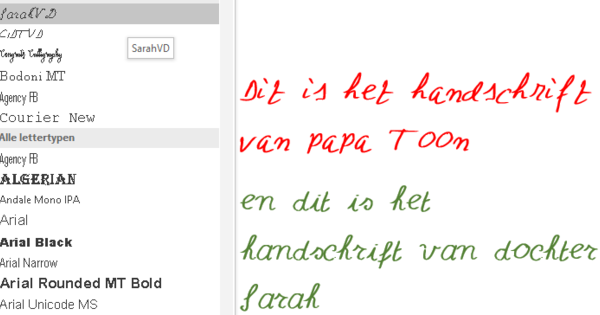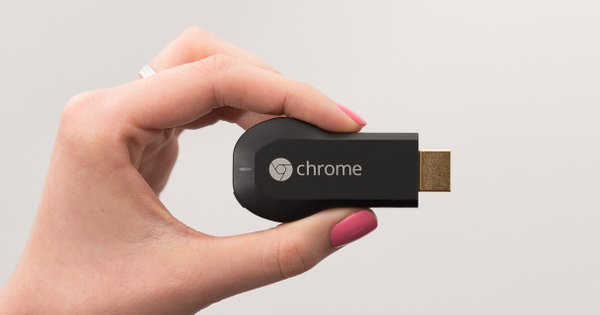A tablet is often written off when the touch screen or the physical buttons no longer work properly. A shame, because the display (one of the most expensive parts) itself often still works excellently. And you can make good use of that.
If the screen of your tablet still works and the buttons no longer function properly, you can often set that tablet as a second screen. You are then not completely freed from using buttons, but it is usually sufficient to turn on the tablet and start the relevant app. Once the connection has been made, you don't have to do anything with the buttons during that session. In this article we explain how you can make your tablet communicate with your PC in such a way that it becomes an extension of your monitor.
01 Performance
In this series we have used old tablets for a wide variety of tasks, with one task requiring more processing power than the other. Whether the tablet you have is suitable for use as a second screen mainly depends on the graphics power under the hood and the refresh rate of the screen. After all, your computer visually transmits the entire desktop environment to the tablet via the wireless connection, and it must be able to display this.
If your tablet can't handle that, a window you drag will not slide smoothly on the screen, but will jump and that makes the situation unworkable. We are using a paid app in this article and it would be a shame to find out after purchase that your tablet is too slow. Therefore, first try the app that we discuss in the 'Remote Desktop' box. If your tablet pulls that solution, it can certainly function as a second display.
02 Protective cover
When you are going to use a tablet as a second monitor, it is important that it can be set up properly. After all, it is of no use if your tablet is an extension of your monitor, and then lies flat in front of you on the desk. We therefore recommend that you buy a protective cover that you can fold so that part of the cover acts as a stand for your tablet. When Apple first introduced these covers for its iPads, they cost a small fortune, now so many other manufacturers have copied this design that you can pick up such a protective cover for a few euros at a euro shop.
There are also stands that allow you to attach your tablet to your display, but these are so expensive that we don't consider them an option for this article.

03 Install App
There are various apps that you can use to 'extend' your screen via your tablet. By far the best in our experience is Duet Display (10.99 euros in the iOS App Store), which is only available for the iPad. If you are looking for a program for your Android tablet, download Air Display 2 for 4.99 euros (note: there is also a version 3, but it only works with MacOS).
When you have Duet Display installed on your iPad, the app tells you to navigate to www.duetdisplay.com on your PC. click on Download PC to download the software and start the installation. Once the software has been installed (and you have restarted your PC as instructed) press Next one on the iPad. You will now see a number of information screens, press Next one until you Complete sees. Now connect the iPad to your PC. The app will now connect directly to your PC. In principle, you don't need to configure anything, the app now automatically turns your tablet into an extension of your screen on the right. In other words: when you now leave the right side of the screen with your mouse, you will see it appear on your tablet!

04 Adjust screen
The fact that you don't have to adjust any options to be able to use Duet Display, doesn't mean that you can't. You will find few options in the app itself, but that is simply because this app simply makes your computer believe that the iPad is really a second display. To adjust the settings you must be on your PC: right click on the Desktop and choose Display Settings. You can now drag the second screen (i.e. the iPad) exactly to the place where you placed it. So if your tablet is to the left of your monitor and a bit lower, you also move the second screen to that place.
You can now get started with your iPad as a second display. And the best part is: if the touch screen still works, you now have an interactive second screen, because you can also control the elements you see on your iPad with your fingers.

remote desktop
Your tablet must be powerful enough to display the visual information it receives from your PC. A great way to test that (and as a bonus a nice extra application for your tablet) is to use a Remote Desktop application such as TeamViewer. With TeamViewer, your tablet does not work as a second screen, but you can literally take over and control your computer from a distance. TeamViewer is free and wireless. If your iPad can handle this application, then you can spend some money for Duet Display with peace of mind.
05 Social screen
The term "Second screen" was widely used a few years ago to refer to using a second screen while watching TV. Nowadays also known as a 'social screen: use a second screen while watching TV to see what is being said about a high-profile TV program (for example a popular talk show, De lice mother, Wie is de Mol).
Of course it seems anything but social to sit in front of the television with your tablet, but it can actually give a huge extra boost to the television experience (and if you are alone in front of the television, then the social aspect doesn't count). . During such a high-profile program, open an app such as Twitter and search for the hashtag that belongs to the program. You can then all talk about the program you are watching. Even though this probably sounds terrible to an older generation, it connects enormously. So: you can use your tablet for this too!


